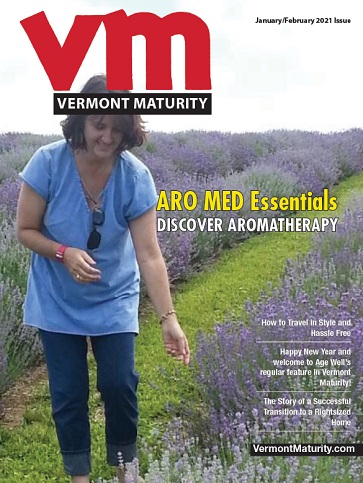In recent years Vermont has ranked among the “least religious” states in the nation, but houses of worship can still be found in nearly every town. Many of these buildings are among the oldest and most treasured, and often serve as gathering places for more than just their congregants. Some in fact are no longer used for religious purposes but have been preserved for their usefulness, beauty, and the stories they tell.

Among the most unique church buildings in Vermont is the Old Round Church in Richmond. It is indeed circular, a 16-sided structure built from 1812 to 1813 by self-taught architect William Rhodes, according to the Richmond Historical Society. The reason for its unusual construction is uncertain, but theories include an absence of corners to allow the devil or other evil doers no place to hide. Or perhaps Rhodes was simply copying the architecture of the meeting house where his parents lived in New Hampshire.
The building was closed due to safety concerns in 1973 and reopened to the public after extensive repairs and renovations. Original components can still be found, including door hardware thought to be forged in Rhodes’ own blacksmith shop, floorboards more than two-feet wide and original pew doors and hinges.
Today the building is a summer and fall tourist destination, as well as a venue for weddings and community events under ownership of the town and maintained by the historical society. It was previously the place of worship for five Protestant denominations.
Though the Old Round Church is no longer used as a church, the building and artifacts inside still tell the story of those who worshiped there. The Ohavi Zedek synagogue in Burlington does the same for not only its own members but it also helps tell the histories of the city’s Jewish and immigrant communities.
Ohavi Zedek, Vermont’s oldest and now largest Jewish congregation, began in 1885 with just 18 people. Its current home was built in 1952, but inside the lobby hosts an amazing artifact of Burlington’s Jewish community from the early 1900s.
That piece of history is now known as “The Lost Mural,” which over the course of a century was celebrated, criticized, deliberately hidden, forgotten by many, found, moved a mile on a truck and is now being restored. More people can see the artwork now than at any time in the last 80 years, thanks to a few people who kept the story alive and those they inspired to save it.
The large wall mural shows Old Testament imagery painted by Lithuanian artist Ben Zion Black in 1910. It was originally housed in the Chai Adam Synagogue on Hyde Street, which closed in 1939 when it merged with Ohavi Zedek. The building was used as commercial space, but the mural survived. When the building was to be converted to apartments in 1986, the developer agreed to put the mural behind a false wall rather than destroy it. The right people remembered it was there, and when the building changed hands again in 2012 the mural was uncovered, conserved, and eventually moved to Ohavi Zedek. Conservation cleaning of the mural wrapped up in August, the next phase will be restoration of damaged areas.
Continual restoration has kept The Old First Church in Bennington a landmark destination in southern Vermont. The bicentennial of the building was celebrated in 2006, but its history starts on December 3, 1762, when the first Protestant congregation in the New Hampshire Grants first gathered. A plain pine structure, likely in the somber Puritan style inspired by the writings of John Calvin, served as the original meeting house, according to historians Joseph Parks and Tyler Resch.
After years of wrangling over style, location and how to pay for the new church, enough pew boxes were “sold” to raise $8,000 and construction began in 1804. The current structure was completed in 1805 and construction overseen by Lavius Fillmore, an established church architect who moved to Bennington during the build and later would build a similar church in Middlebury.
The six main columns are made of whole tree trunks, a practice previously reserved by British law for the masts of the Royal Navy, according to the account written by Parks and Resch.
Poet Robert Frost’s gravestone is in the neighboring cemetery and the Bennington Battle Monument is just up the street, making the church part of a popular tourist route.
Perhaps the most photographed and recognizable church in Vermont is the one that crowns Burlington’s Church Street. Any travel story or even national news story about the city is almost guaranteed to include an image of the iconic building and the pedestrian street before it. This home of the Unitarian Universalist church is believed to be the oldest surviving house of worship in Burlington. The building, once known as The Brick Meeting House, was constructed in 1816 and designed by Boston architect Peter Banner.
The roots of the church actually date back even farther to 1797 when the First Society of Social and Public Worship in Burlington was formed, according to the church’s account. A decade later the Society fractured into liberal and conservative groups. The liberal faction called itself the First Congregational Society of Burlington and in 1814 purchased a five-acre lot for $1,000 on which The Brick Meeting House was built two years later.
“The timbers came from the Brown’s River Valley, the brick was made nearby, and the nails were hammered by hand,” according to the church history online. It cost $22,185.34 to build. The building has undergone many renovations and repairs in the last 200 years. Over the years the congregation’s name changed several times; a vote in 1982 established its current name of The First Unitarian Universalist Society of Burlington.
More Information
More about the Old Round Church: OldRoundChurch.com
Nothing Ventured, Nothing Have – a documentary video about the Old Round Church: Vimeo.com/72287764
An excellent and detailed telling of the Lost Mural story can be found at LostMural.org
Video about the Lost Mural: Vermonthistory.org/the-lost-mural-part-1
More about Ohavi Zedek synagogue: OhaviZedek.org/about
More about the Old First Church in Bennington: OldFirstChurchBenn.org
History of the First Unitarian Universalist Society of Burlington: UUSociety.org/information/history
Clover Whitham has been a journalist at Vermont newspapers for more than a dozen years and is now a freelance writer and editor near Burlington.
Related Articles & Free Vermont Maturity Subscription

The Vermont Republic – The Story of When Vermont was an Independent Country
Vermont’s Covered Bridges are Where History and Beauty Converge





Comment here